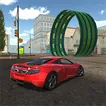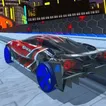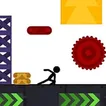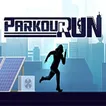























Parkour Games: Mastering Movement in Virtual Worlds
Parkour, the art of navigating through environments with speed, agility, and fluidity, has leapt from the streets into the digital realm, giving rise to a thrilling genre of video games. These games encapsulate the essence of physical parkour, offering players a virtual playground where they can perform acrobatic feats without the risk of physical injury. Players experience the exhilaration of free-running through realistic urban settings or fantastical landscapes, pushing the boundaries of their virtual capabilities.
The appeal of parkour games lies in their ability to simulate the adrenaline rush of defying gravity and the satisfaction of executing perfect maneuvers. They challenge gamers to think creatively, using the virtual environment to their advantage, finding new paths, and overcoming obstacles with finesse. The genre has evolved significantly, reflecting its real-world counterpart’s growth in popularity and the increasing sophistication of game design.
In these games, players are often tasked with reaching a destination as efficiently as possible, while navigating a labyrinth of rooftops, alleyways, and structures. Precision is key, as a mistimed jump or a clumsy landing can mean the difference between success and failure. The immersive experience is heightened by the fluidity of movement that these games strive to achieve, making every action feel natural and intuitive.
As parkour games continue to captivate audiences, they not only pay homage to the physical discipline but also contribute to the cultural zeitgeist, influencing how movement and freedom are perceived in virtual worlds. They stand as a testament to human dexterity and imagination, inviting players to leap into the unknown and master the art of movement within the boundless realms of gaming.
Parkour Gaming: Core Mechanics and Exhilarating Challenges
At the heart of parkour gaming lies a set of core mechanics that demand mastery over virtual kinetics. Running, jumping, and climbing are the foundational elements that enable players to traverse the intricate environments crafted for these games. However, it is the advanced techniques like wall-running, vaulting, and sliding that elevate the gameplay, transforming basic movements into a symphony of exhilarating acrobatics.
These mechanics are not just about flashy moves; they are integral to the challenges that parkour games present. Players must assess their surroundings rapidly, identify potential routes, and execute a combination of movements with precision. The environment becomes a puzzle, where each segment of the terrain offers multiple solutions, and success is measured by the fluidity and efficiency of the chosen path.
The true test comes from the game’s ability to balance speed with accuracy. Rushing headlong may lead to a spectacular fall, while excessive caution could result in a sluggish performance. This delicate equilibrium ensures that players remain engaged, always striving to refine their technique and shave seconds off their best times.
Moreover, these games often incorporate a variety of objectives that go beyond mere traversal. Players might be tasked with collecting items, escaping from pursuers, or reaching checkpoints within time limits, all while maintaining the grace of a seasoned traceur. The result is a gaming experience that is as mentally stimulating as it is physically invigorating, offering a digital playground where the limits of movement are constantly being redefined.
Parkour games, with their core mechanics and challenges, invite players to experience the thrill of fluid motion and the satisfaction of overcoming obstacles with style. They are a celebration of agility and creativity, providing a space where the only limits are those of the players’ reflexes and problem-solving skills.
Visual Artistry and Community Engagement in Parkour Games
The visual landscape of parkour games is as varied as the techniques they simulate. Some opt for a minimalist approach, where stark, clean lines and bright contrasts create a world that’s easy to read at high speeds, emphasizing gameplay over graphical fidelity. Others immerse players in richly detailed urban environments, where every graffiti tag and weathered brick adds to the authenticity of the experience. These aesthetic choices are not merely cosmetic; they shape how players interact with the game, influencing everything from visibility to the perception of movement and flow.
Community engagement plays a pivotal role in the longevity of parkour games. Online leaderboards spark a competitive spirit, encouraging players to refine their skills and claim the top spots. Challenges and time trials become shared experiences, as players exchange tips and celebrate each other’s achievements. This sense of camaraderie extends to user-generated content, where players design and share their own courses, adding infinite replayability and fostering a creative, collaborative environment.
Progression systems within these games often reward dedication and skill development. As players improve, they unlock new moves and abilities, which in turn allow access to previously unreachable areas or the completion of more complex challenges. This sense of growth is crucial, as it not only reflects the player’s journey but also mirrors the real-world practice of parkour, where personal improvement is paramount.
The inclusion of cooperative and competitive modes further enhances the parkour gaming experience. Teaming up with friends to tackle courses or going head-to-head in races adds social dimensions to the game, transforming solitary runs into interactive, shared adventures. These elements ensure that parkour games remain fresh and engaging, cementing their place in the hearts of players who value both visual artistry and community connection.
The Evolution and Future of Parkour Video Games
Parkour video games have come a long way since their inception, mirroring the rise of the real-world sport from urban subculture to mainstream recognition. Early iterations focused on basic movement mechanics, but as technology advanced, so did the complexity and realism of these games. They began to incorporate intricate level designs, realistic physics, and more nuanced control over characters, offering a deeper and more authentic parkour experience.
The genre’s evolution has been influenced by a growing understanding of parkour’s potential to create engaging, dynamic gameplay. Developers have experimented with various perspectives, from first-person to third-person views, each offering a unique way to experience virtual free-running. The integration of storytelling elements has also become more prevalent, with narratives that weave the protagonist’s acrobatic abilities into the fabric of the game’s world and plot.
Looking to the future, parkour video games are poised to take advantage of emerging technologies like virtual reality (VR) and augmented reality (AR). These technologies promise to further blur the lines between player and character, offering an unprecedented level of immersion. With VR and AR, players could experience the vertigo-inducing heights and heart-pounding leaps of parkour as if they were truly there, enhancing the physicality and presence within the game.
Moreover, advancements in motion capture and artificial intelligence could lead to more fluid and responsive character movements, making the in-game parkour even more lifelike. As these technologies mature, we may see games that not only simulate parkour but also teach its principles, potentially encouraging players to take up the sport in the real world.
The future of parkour video games is one of boundless potential, where the thrill of the leap is limited only by the imagination. As the genre continues to evolve, it will undoubtedly inspire a new generation of gamers and traceurs alike, each eager to explore the limits of what is possible in both virtual and physical realms.









